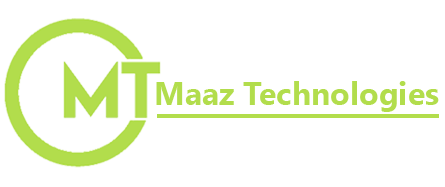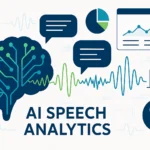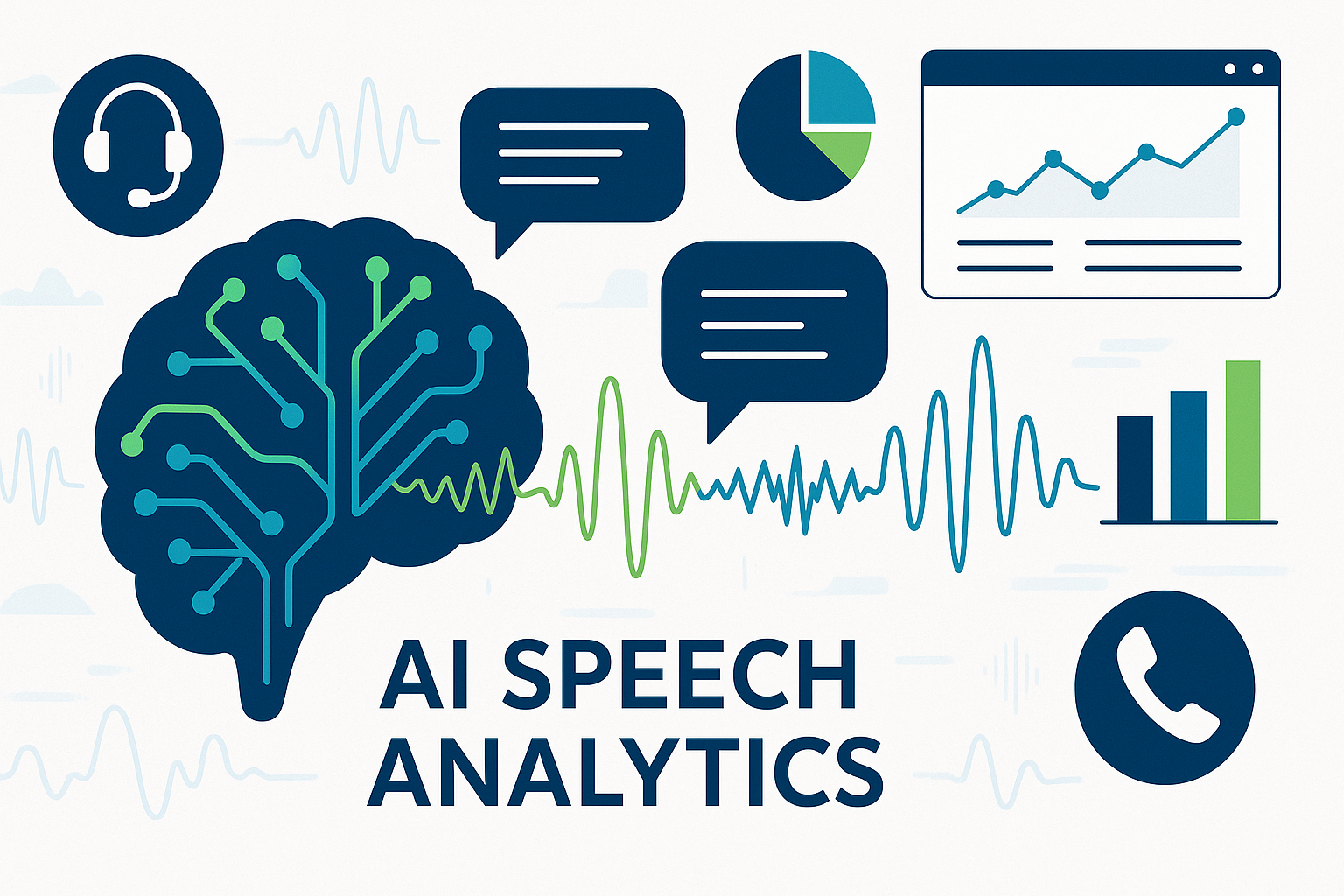
AI Speech Analytics: Transforming Customer Interactions
The world of customer service experiences a revolutionary change because AI speech analytics serves as its fundamental transformative force. Speech analytics technology has become a transformative solution which converts all customer dialogues into valuable business intelligence for organizations that aim to provide top notch customer experiences and operational excellence.
To explore our full AI Powered Speech Analytics solution with AI speech intelligence, agent QA, sentiment & compliance tools visit our main AI Powered speech Analytics Page.
What is AI Speech Analytics?
Businesses use AI speech analytics to combine advanced artificial intelligence with communication analysis for transforming their customer interaction understanding. This technology surpasses basic call recording capabilities to deliver detailed assessments of every customer dialogue across phone calls and voice calls and additional audio communication channels.
The core functionality of speech analytics solution relies on sophisticated algorithms to analyze extensive conversation data which transforms spoken words into business-driving intelligence. The technology has experienced substantial development since its basic transcription origins to become advanced systems that detect emotional tones and compliance problems and customer difficulties during real time interactions.
The technology processes spoken words through several layers. First, it converts audio to text (that’s the easy part). Then comes the sophisticated analysis – understanding context, detecting emotions, identifying compliance risks, and spotting patterns that even experienced supervisors might miss.
Core Technology and Role of Artificial Intelligence
The modern speech analytics technology operates through multiple essential technological components which generate valuable customer conversation insights. Natural language processing functions as the fundamental element of these systems which allows computers to recognize and decode human speech patterns with high precision.
When customers engage in customer calls, the AI systems immediately begin processing the audio data through sophisticated speech recognition algorithms. These systems don’t just transcribe words; they analyze tone, pace, emotional inflection, and context to build a comprehensive picture of each interaction. The artificial intelligence component continuously learns from new data, improving its ability to identify patterns and extract valuable insights from each conversation.
The technology processes call recordings in real-time or post-interaction, depending on the specific implementation. This flexibility allows businesses to address immediate concerns during live interactions while also building long-term intelligence databases for strategic decision-making.
Key Components of Speech Analytics Tools
Modern speech analytics tools encompass several critical components that work synergistically to deliver comprehensive conversation intelligence. Call recordings form the primary data source, capturing every nuance of customer interactions across multiple channels. These recordings are processed through advanced transcription systems that convert speech data into call transcripts with impressive transcription accuracy.
The audio data processing capabilities extend far beyond simple transcription. These systems analyze speech patterns, identify speaker emotions, detect compliance-related phrases, and flag potential issues automatically.
Text analytics capabilities transform the processed conversation data into structured insights. This component identifies trends, categorizes conversations by topic or outcome, and generates reports that highlight critical business metrics. The integration of these components creates a comprehensive platform that turns raw customer interactions into strategic business intelligence.
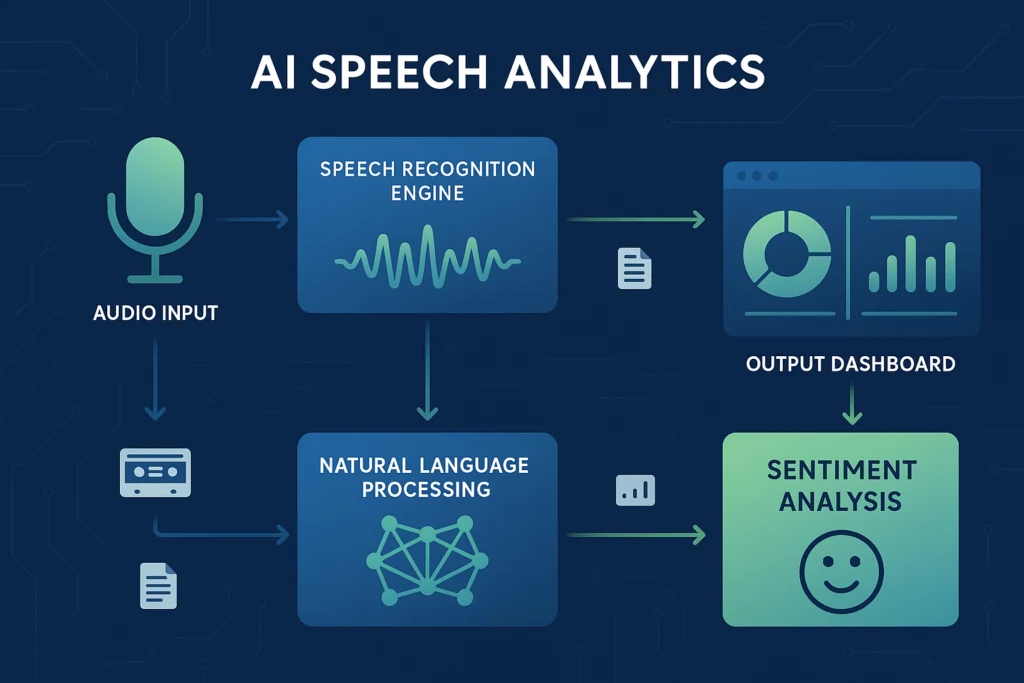
How AI Speech Analytics Benefits Businesses
The implementation of AI speech analytics delivers transformative benefits across multiple dimensions of business operations. Organizations that embrace this technology typically see immediate improvements in customer satisfaction, operational efficiency, and regulatory compliance.
Reducing Compliance Risk Through Compliance Monitoring
One of the most critical applications of speech analytics involves compliance monitoring, particularly in heavily regulated industries. The technology automatically scans every customer conversation for compliance-related phrases, potentially problematic statements, and regulatory adherence issues. This automated approach significantly reduces compliance risk by ensuring that human oversight doesn’t miss critical compliance violations.
Financial services organizations, healthcare providers, and other regulated industries rely heavily on this capability to maintain regulatory standards while processing thousands of customer interactions daily. The system can flag conversations that require immediate attention, document compliance adherence, and generate reports for regulatory authorities when required.
Improving Operational Efficiency and Customer Support
Speech analytics drives operational efficiency by identifying bottlenecks, inefficiencies, and opportunities for process improvement within customer support operations. The technology analyzes average handle time across different types of inquiries, identifies common customer needs that could be addressed through self-service options, and highlights training opportunities for support teams.
Customer support teams benefit from real-time insights that help them resolve issues more effectively. When agents have access to immediate feedback about conversation tone, customer sentiment, and potential escalation risks, they can adjust their approach accordingly, leading to better outcomes for both customers and the organization.
Enhancing Contact Center Performance with Real-Time Insights
Contact center performance receives a significant boost through the implementation of real-time speech analytics. Supervisors gain immediate visibility into ongoing conversations, allowing them to provide coaching opportunities when agents need support or when conversations show signs of potential escalation.
The technology tracks key performance indicators continuously, providing contact center operations with detailed metrics about agent performance, customer satisfaction trends, and operational effectiveness. This data-driven approach enables managers to make informed decisions about staffing, training programs, and process improvements.
Delivering Deep Insights for Better Customer Experiences
The ability to extract deep insights from every customer interaction transforms how businesses approach customer experience management. Speech analytics reveals patterns in customer behavior, identifies recurring issues, and highlights opportunities to enhance the overall customer journey.
Organizations use these insights to proactively address customer pain points before they escalate into larger problems. The technology identifies trends that might not be apparent through traditional feedback mechanisms, providing a more comprehensive understanding of customer needs and expectations.
Driving Business Intelligence with Speech Analytics
The strategic value of speech analytics extends far beyond operational improvements, serving as a powerful engine for business intelligence and strategic decision-making.
Extracting Insights for Key Business Outcomes
Understanding customer needs becomes significantly more sophisticated when organizations can analyze every customer conversation systematically. Speech analytics identifies the root causes of customer issues, reveals unmet needs, and highlights opportunities for product or service improvements.
Trend analysis capabilities process call volumes, customer feedback patterns, and interaction outcomes to provide strategic insights about market conditions, customer preferences, and competitive positioning. This intelligence enables businesses to make data driven decisions that align with actual customer needs rather than assumptions or limited feedback samples.
The technology’s ability to process sentiment scores across thousands of conversations provides unprecedented insight into customer satisfaction trends. When businesses can identify negative sentiment patterns early, they can implement corrective measures before customer dissatisfaction impacts broader business outcomes.
Improving Sales and Customer Relationships
Sales teams benefit enormously from conversation insights derived through speech analytics. The technology identifies successful sales conversation patterns, highlights objection-handling techniques that work, and reveals customer preferences that can inform future sales strategies.
Building stronger customer relationships becomes more achievable when organizations have comprehensive intelligence about customer communication patterns, preferences, and historical interaction outcomes. This data enables personalized approaches that resonate with individual customers while maintaining efficiency across large customer bases.
Voice of the customer initiatives gain significant depth and accuracy when supported by comprehensive speech analytics. Rather than relying on limited survey responses or selected feedback, organizations can analyze every customer interaction to understand true customer sentiment and preferences.
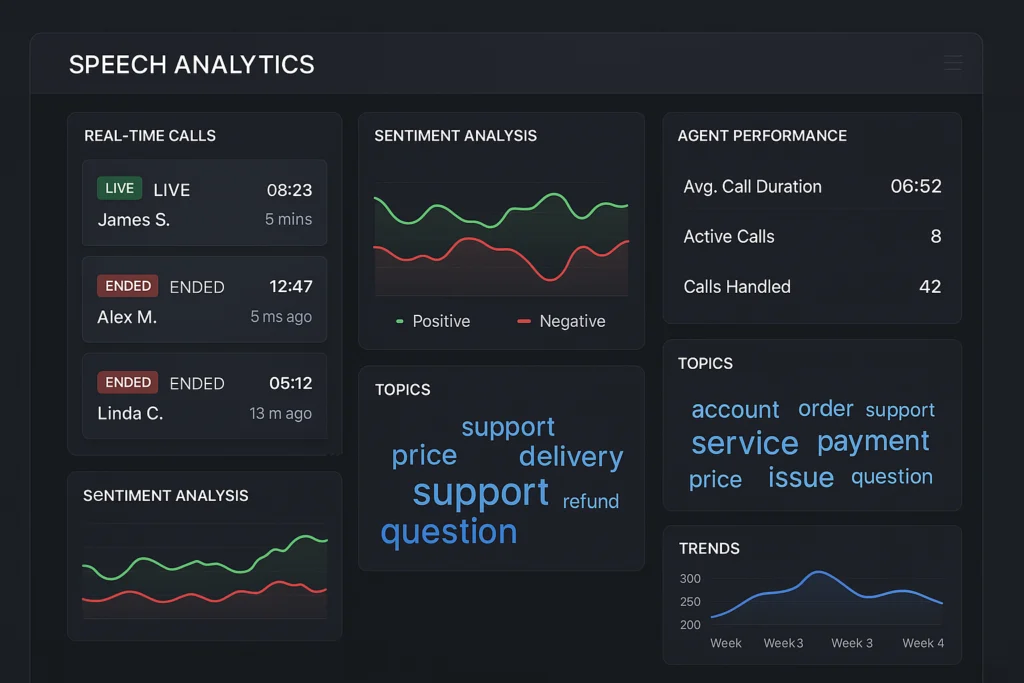
Applications of AI Speech Analytics Across Industries
Enhancing Contact Center Operations
Contact centers represent the most common application environment for speech analytics, where the technology delivers immediate and measurable improvements in operational performance.
The technology ensures that compliance issues receive immediate attention through automated monitoring and flagging systems.
Real-time analytics capabilities enable supervisors to intervene in challenging situations before they escalate, providing support to agents when they need it most. This proactive approach improves both customer satisfaction and agent confidence, creating a positive cycle of performance improvement.
Financial Services and Other Use Cases
Financial services organizations leverage customer data analysis to identify cross-selling opportunities, detect potential fraud, and ensure regulatory compliance across all customer interactions. The sensitive nature of financial conversations requires sophisticated analysis capabilities that can identify sensitive information while maintaining data security and privacy standards.
Customer churn reduction becomes more effective when organizations can identify early warning signs through conversation analysis. Quality management processes benefit from comprehensive data about customer interactions, enabling more targeted improvement initiatives and better resource allocation.
The technology’s ability to analyze sensitive information while maintaining security standards makes it particularly valuable for industries that handle confidential customer data regularly.
Best Practices for Implementing Speech Analytics Solutions
Successful speech analytics needs good planning, the right tech, and proper training.
Choosing the Right Speech Analytics Platforms
The selection of appropriate speech analytics platforms requires careful evaluation of organizational needs, technical requirements, and integration capabilities. Organizations should consider factors such as scalability, accuracy rates, real-time processing capabilities, and compatibility with existing technology infrastructure.
Different Speech Analytics Platforms offer varying capabilities, from basic transcription and keyword detection to sophisticated AI-driven sentiment analysis and predictive analytics. The choice should align with specific business objectives and technical requirements while providing room for future expansion and capability enhancement.
Integrating Conversation Intelligence into Contact Centers
Conversation intelligence integration requires thoughtful change management that helps contact center agents and supervisors adapt to new workflows and capabilities. The technology should enhance rather than replace human judgment, providing additional intelligence that supports better decision-making. Agents need to know how the technology works, what it tells them, and how to use that info to improve customer service.
Training programs for contact center agents should focus on how to leverage speech analytics insights to improve customer interactions.
Analyzing Call Data for Coaching Opportunities
Supervisors can spot where agents need help, find effective methods to share with others, and track progress using clear metrics.
Case studies and customer stories provide valuable examples of successful speech analytics implementation, helping organizations understand best practices and avoid common pitfalls. These real-world examples demonstrate the tangible benefits that organizations can achieve through strategic implementation.
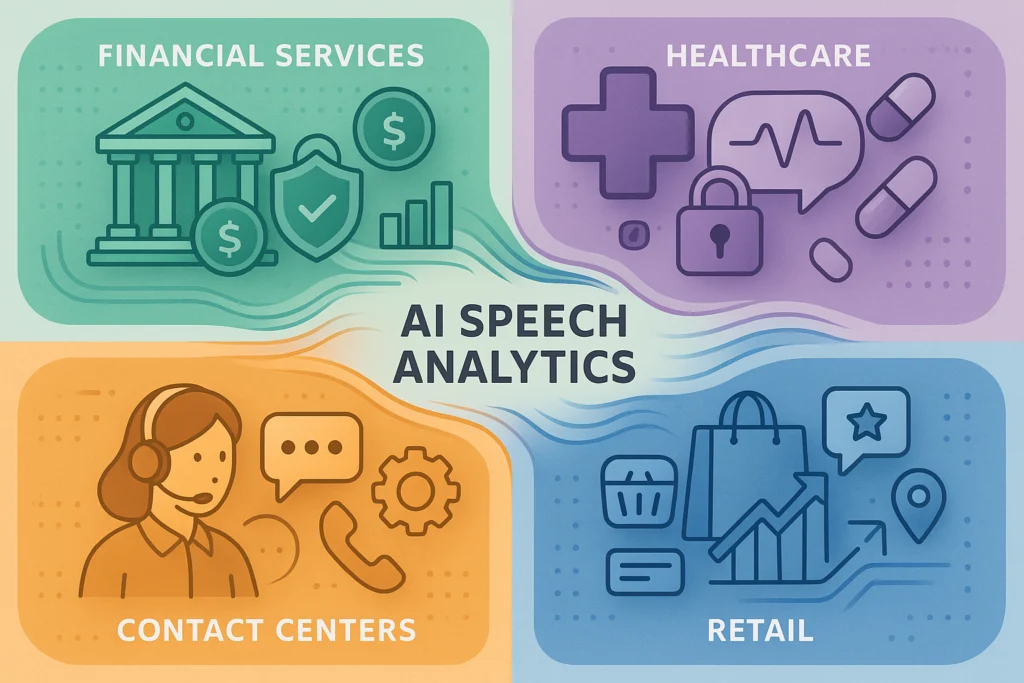
Speech Analytics: Shaping Customer Journeys and Business Success
The future of customer service lies in the ability to transform every interaction into meaningful insights that drive continuous improvement and innovation. Speech analytics technology provides organizations with unprecedented visibility into customer needs, preferences, and satisfaction levels.
Through conversational intelligence, businesses can identify patterns and trends that inform strategic decisions about product development, service delivery, and customer experience enhancement. Support calls become valuable sources of business intelligence rather than simply operational necessities.
The technology’s ability to process vast amounts of conversation data while maintaining accuracy and relevance makes it an indispensable tool for organizations committed to delivering exceptional customer experiences. As AI capabilities continue to evolve, speech analytics will become even more sophisticated, providing deeper insights and more actionable intelligence.
Organizations that embrace speech analytics today position themselves to leverage the full potential of their customer interactions, turning every conversation into an opportunity for learning, improvement, and competitive advantage. The investment in this technology pays dividends through improved customer satisfaction, operational efficiency, and strategic intelligence that drives long-term business success.
Frequently Asked Questions About AI Speech Analytics
What is the AI that analyzes speeches?
The AI that analyzes speeches encompasses several interconnected technologies working together as a comprehensive speech analytics solution. These systems utilize machine learning algorithms, neural networks, and deep learning models trained specifically for speech recognition and language understanding. Popular platforms include solutions from companies like Observe.ai, Verint, NICE, Genesys, and CallMiner, each offering unique approaches to conversation intelligence and speech analytics technology.
What is AI speech technology?
AI speech technology represents the broader category of artificial intelligence applications designed to process, understand, and analyze human speech patterns. This technology encompasses speech-to-text conversion, sentiment analysis, emotion detection, and conversational intelligence capabilities. The technology processes call recordings in real-time or post-interaction, identifying compliance issues, customer pain points, and coaching opportunities while maintaining high transcription accuracy across multiple languages and dialects.
Can AI be used for analytics?
AI serves as a powerful foundation for analytics across numerous business applications, particularly in processing unstructured data like customer conversations. In speech analytics, AI algorithms can analyze thousands of interactions simultaneously, identifying patterns that would be impossible for human analysts to detect manually. The technology provides valuable insights about customer needs, agent performance, operational efficiency, and business outcomes through automated analysis of conversational data.
See Our solution webpage in which we integrate AI: AI Powered Speech Analytics
What does speech analytics do?
Speech analytics transforms raw audio data from customer interactions into structured business intelligence. The technology automatically categorizes calls, identifies trending topics, measures customer satisfaction through sentiment analysis, and flags potential compliance violations.
How does speech analytics work?
Speech analytics works through a multi stage process that begins with audio capture from various communication channels. The system first converts spoken words into text using advanced speech recognition engines, then applies natural language processing to understand context and meaning. Machine learning algorithms analyze conversation patterns, identify key phrases, and extract sentiment scores. The processed data generates reports, alerts, and actionable insights that support business decision-making and operational improvements.
What is real-time speech analytics?
Real-time speech analytics processes customer conversations as they occur, providing immediate insights and alerts during live interactions. This capability enables supervisors to intervene in challenging situations, provide coaching opportunities to agents, and address potential issues before they escalate.
How speech analytics works in contact centers?
Speech analytics in contact centers operates by continuously monitoring all customer interactions across multiple channels including phone calls, voice chats, and recorded conversations. The system integrates with existing contact center infrastructure to capture audio data, which then undergoes automatic analysis for quality management purposes.
What is the difference between voice analytics and speech analytics?
Voice analytics and speech analytics are often used interchangeably, but voice analytics typically focuses more broadly on acoustic analysis including speaker identification, emotion detection, and vocal characteristics, while speech analytics concentrates specifically on the content and context of spoken words. Both technologies complement each other in comprehensive conversation intelligence platforms, with speech analytics providing content-based insights and voice analytics adding acoustic and emotional context to customer interactions.
Comprehensive Comparison Tables
Leading Speech Analytics Platforms Comparison
| Feature | Enterprise Solutions | Mid-Market Solutions | Small Business Solutions |
|---|---|---|---|
| Real-time Analysis | Advanced AI powered processing | Standard real time capabilities | Basic real time features |
| Transcription Accuracy | 95 – 98% accuracy rates | 90 – 95% accuracy rates | 85 – 92% accuracy rates |
| Language Support | 50+ languages supported | 15 – 25 languages supported | 5 – 5 languages supported |
| Integration Capabilities | Extensive API and connector options | Standard integration options | Limited integration options |
| Compliance Monitoring | Advanced regulatory compliance tools | Basic compliance features | Standard compliance monitoring |
| Sentiment Analysis | Multi-layered emotion detection | Standard sentiment scoring | Basic sentiment analysis |
| Deployment Options | Cloud, on premise, hybrid | Primarily cloud based | Cloud only solutions |
| Analytics Dashboards | Customizable enterprise dashboards | Standard reporting interfaces | Basic dashboard templates |
| Agent Coaching Tools | Advanced coaching automation | Standard coaching features | Basic performance feedback |
| Price Range | $50 – 200+ per agent/month | $25 – 75 per agent/month | $10 – 35 per agent/month |
Speech Analytics vs Text Analytics Comparison
| Aspect | Speech Analytics | Text Analytics |
|---|---|---|
| Data Source | Audio recordings from voice calls and conversations | Written text from emails, chat, surveys, and documents |
| Processing Complexity | Requires speech to text conversion plus content analysis | Direct text processing without conversion step |
| Accuracy Challenges | Audio quality, accents, background noise affect accuracy | Spelling errors, abbreviations, slang impact analysis |
| Real-time Capabilities | Can process live conversations with minimal delay | Instant processing of text-based communications |
| Emotional Context | Captures tone, pace, and vocal emotions naturally | Relies on written language patterns for sentiment |
| Implementation Cost | Higher due to speech processing requirements | Lower implementation and processing costs |
| Use Cases | Contact center calls, sales conversations, support interactions | Customer feedback, social media, written communications |
| Integration Requirements | Telephony systems, recording infrastructure needed | CRM systems, communication platforms integration |
| Compliance Applications | Call recording regulations, verbal agreement monitoring | Document retention, written communication policies |
| Analysis Depth | Conversation flow, interruptions, speaking patterns | Keyword frequency, topic modeling, sentiment trends |
Speech Analytics Technology Components Comparison
| Technology Layer | Traditional Approach | AI-Powered Approach | Next-Generation AI |
|---|---|---|---|
| Speech Recognition | Rule-based phonetic analysis | Machine learning models | Deep neural networks with context awareness |
| Language Processing | Keyword matching systems | Natural language understanding | Conversational AI with intent recognition |
| Pattern Detection | Manual rule configuration | Automated pattern learning | Predictive analytics with behavioral modeling |
| Sentiment Analysis | Basic positive/negative scoring | Multi-dimensional emotion detection | Real-time emotional intelligence with escalation prediction |
| Integration Capability | Limited API connectivity | Standard REST API integration | Advanced microservices architecture |
| Learning Capability | Static rule-based system | Supervised learning models | Continuous learning with feedback loops |
| Accuracy Improvement | Manual tuning required | Algorithm optimization | Self improving AI with performance monitoring |
| Scalability | Hardware-dependent scaling | Cloud-native scalability | Elastic AI processing with auto-scaling |
Industry-Specific Speech Analytics Applications
| Industry Sector | Primary Use Cases | Key Benefits | Compliance Requirements |
|---|---|---|---|
| Financial Services | Fraud detection, regulatory compliance, sales process monitoring | Risk reduction, compliance assurance, customer trust | SEC, FINRA, PCI-DSS regulations |
| Healthcare | Patient interaction quality, HIPAA compliance, care coordination | Patient satisfaction, regulatory compliance, care quality | HIPAA, FDA guidelines, state regulations |
| Insurance | Claims processing, customer service quality, fraud prevention | Faster claims resolution, improved customer experience | State insurance regulations, privacy laws |
| Telecommunications | Network issue resolution, service quality monitoring, retention | Reduced customer churn, improved service delivery | FCC regulations, consumer protection laws |
| Retail & E-commerce | Customer support optimization, sales conversation analysis | Enhanced customer experience, increased conversion rates | Consumer protection, privacy regulations |
| Government | Citizen service quality, compliance monitoring, process improvement | Improved public service delivery, transparency | FOIA, privacy laws, accessibility requirements |
The future of customer service excellence will be built through this complete AI speech analytics system which uses every interaction to help organizations learn and improve continuously.
